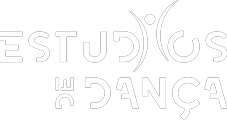Errare humanum est
[PT]
À passagem do corpo, os espaços nunca mais serão os mesmos.
O espaço é na sua origem uma grande sala de medi(t)ação do corpo. Um campo de caminhos em potência, onde as distâncias vazias entre pontos são preenchidas por todas as construções do corpo em movimento. O espaço é o corpo em movimento, onde cada um de nós r/existe enquanto erra de um lado para o outro e assiste à passagem do tempo.
O corpo repete para aprender melhor, copia para aperfeiçoar, l/imita para ser mais livre, erra enquanto caminha, confunde para ser maior. Exercita-se porque sabe que o pensamento que vale é aquele que anda e que o desvio é o caminho.
Errar é caminhar em diálogo permanente com tudo o que o/fende o corpo, um corpo em processo d’obra aberta, que se consciencializa em cada novo movimento e nos entremeios das suas i/medi(a)ções.
Poeticamente o homem habi(li)ta o corpo do espaço.
Na sua errante busca de sentido para a vida, o corpo liberta partículas, fragmentos i/materiais para o espaço, na forma de pensamentos, palavras e imagens, que nos inspiram, sopram e transformam em orações.
Na Capela dos Lencastres, Os Espacialistas deixam à sua passagem uma Escultura-Erro: uma montanha em papel amarrotado, onde cada folha é uma forma de errar, uma conta de oração amassada, um reflexo da memória dos gestos que a moldaram e a tornaram numa paisagem (de) interior exposta a múltiplos sentidos.
Nesta d’obra de papel, a re/acção poética de amassar foi transformada em gesto/ritual escultórico e este numa h/oração de errar e perdoar.
À passagem do erro, só nos resta imaginar o som de cada folha de papel sujeita ao pensamento e à imaginação das mãos que a moldaram com todas as “intencidades”.
(Os Espacialistas dão erros!)
-------
[EN]
With the passage of the body, spaces will never be the same.
The space is originally a large measurement room of the body. A field of potential paths, where the empty distances between points are filled by all the constructions of the moving body. Space is the body in motion, where each of us resist while wandering from one side to the other and watching the passage of time.
The body repeats to learn better, copies to improve, imitates to be freer, makes mistakes while walking, confuses to be bigger. He exercises because he knows that the thought that counts is the one that walks and that the detour is the way.
To err is to walk in permanent dialogue with everything that breaks the body, a body in the process of open work that becomes aware in each new movement and in the midst of its measurements.
Poetically, man inhabits the body of space.
In its errant search for meaning in life, the body releases particles, i/material fragments into space, in the form of thoughts, words and images, which inspire, blow and transform us into prayers.
In Chapel of Lencastres, Os Espacialistas leave a Sculpture-Error in their wake: a mountain in crumpled paper, where each sheet is a way of making errors, a crumpled prayer bead, a reflection of the memory of the gestures that shaped it and turned it into an interior landscape exposed to multiple senses and meanings.
In this piece of paper, the poetic re/action of kneading was transformed into a sculptural gesture/ritual and this one into a prayer of making mistakes, walk and forgive.
At the passage of error, we can only imagine the sound of each sheet of paper subjected to the thought and imagination of the hands that shaped it with all the “intencity”.
(Os Espacialistas make and give errors!)
Os Espacialistas (Diogo Castro, Luis Baptista e Sérgio Estêvão)
Os Espacialistas é um projecto laboratorial de investigação teórica e prática das ligações transdisciplinares entre Arte, Arquitectura e Educação com início de actividade em 2008. Substituem o lápis pela máquina fotográfica, enquanto dispositivo de desenho, de pensamento, de percepção e de diagnóstico do espaço natural e construído, cujas acções são reguladas pelo Diário do Espacialista e auxiliadas pelo “Kit Espacialista Por/táctil” que transportam consigo.
Os Espacialistas is a laboratorial project of theoretical and practical research on the connections between Art and Architecture, which started in 2008. They substitute the pencil for the camera as a device for drawing, thinking, perception and diagnosis of natural and built space, whose actions are regulated by the Spatialist’s Diary and aided by the “Portable Spatialist Kit” they carry with them.
